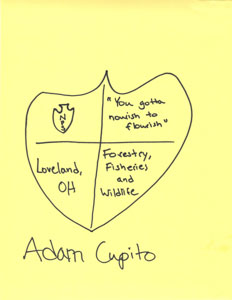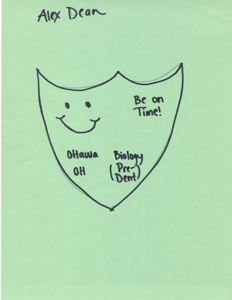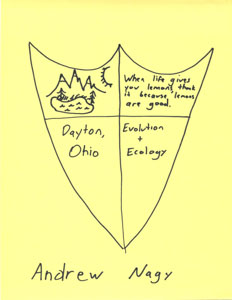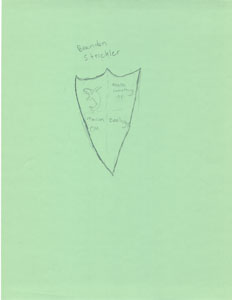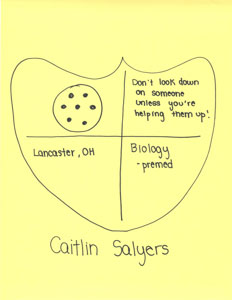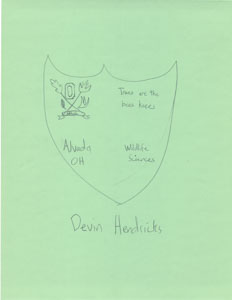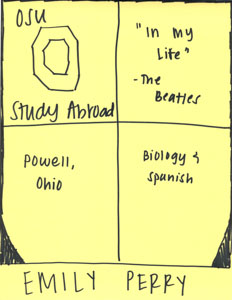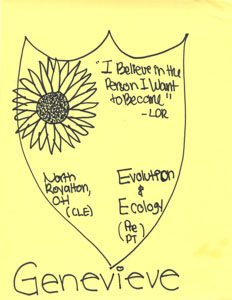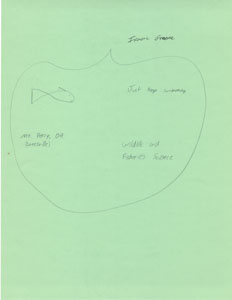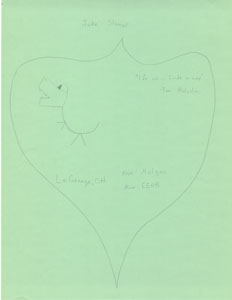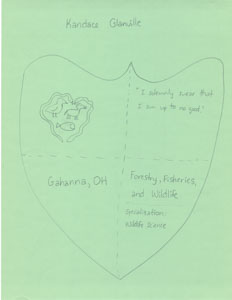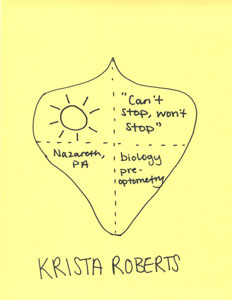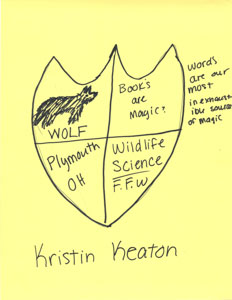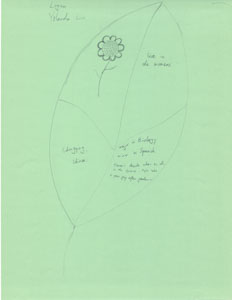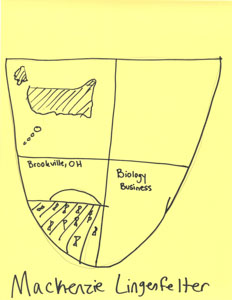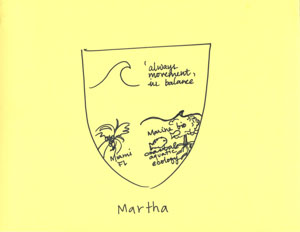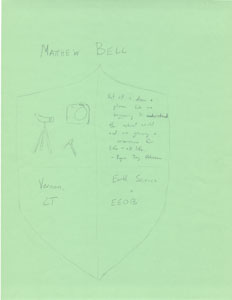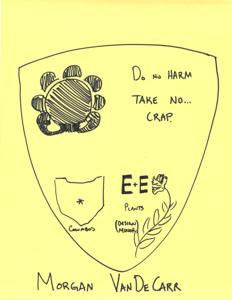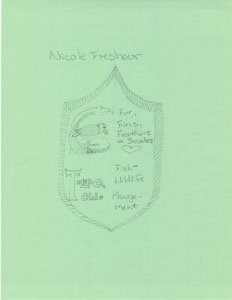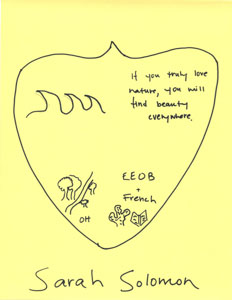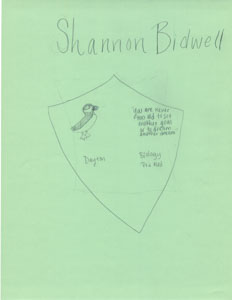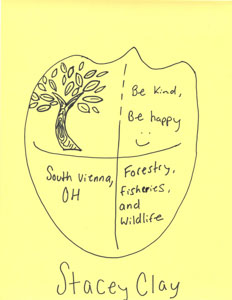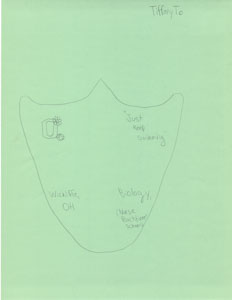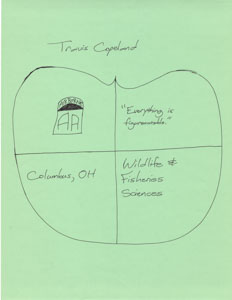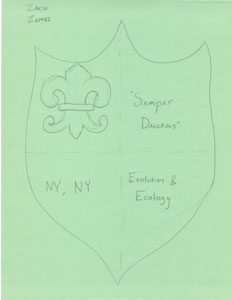MOSS PHOTOS FROM LAB
(LINK)
WEEK 7: OHIO PLANTS IN RESEARCH:
ORIGIN OF THE APPALACHIAN GAMETOPHYTE (AJB article)
“GATHERING MOSS” (book chapters) BY ROBIN WALL KIMMERER
Due Tuesday, and counting as 20 points of the final exam, reading reviews (handed out in class Tuesday (LINK) focuses on these articles/chapters. Here they are in portable document format for you to download or read directly.
GATHERING MOSS (link) book by Robin Wall Kimmerer
UNRAVELING THE ORIGIN OF THE APPALACHIAN GAMETOPHYTE (link) (AJB ARTICLE)
WEEK 7…FIELD EXPERIENCE “CROWD-SOURCING” OUR BOTANICAL DISCOVERIES
THIS PAGE (link) will help with the crowd-sourcing activity handed out in class Tuesday of this week (LINK) and due next Tuesday (10 points of the Final Exam.
WEEK 6…BOTANICAL SURVEY WEB PAGE UPDATES (40 pts. total)
COEFFICIENTS OF CONSERVATISM (4 EACH HIGH AND LOW) (20 pts.)
CRYPTOGAMS (Mosses and Lichens) (20 pts.)
PART 1: BOTANICAL SURVEY UPDATE: FOUR HIGH CC AND FOUR LOW CC SPECIES
Now that you’ve been to your botanical survey site a few times and have a good idea what is there (and have started your written report …right??) the world is keen to hear more of what you’ve discovered! Let’s get some practice using the coefficients of conservatism (CC) assigned to each species by Andreas et al. (2002). The CC, with values ranging from 0 to 10, is an estimate of the degree to which a species is associated with high-quality natural communities similar to those that existed in pre-settlement times. Exotic species are not assigned CC values.
CC values for all of Ohio’s plants can be found in the Ohio Environmental Protection Agency’s web site. Click on the image below to navigate to the Ohio EPA reports page which includes the CC/FQAI material.
Scroll down on the EPA page to access the Floristic Quality Assessment Index (FQAI) materials. This include the following:
The original FQAI REPORT published in 2004, also available as a direct download HERE (link).
An excel SPREADSHEET published in 2004 using older species names that may in fact be consistent with our older field guides, also available HERE (link).
An html version of 2014 update of the spreadsheet available HERE (link).
Using the CC data in either of these sources, look over the list of species you have compiled for your site. Select FOUR OF YOUR HIGHEST CC (conservative) species and FOUR OF YOUR LOWEST CC species (weedy plants, essentially). Provide photographs, descriptions, and natural history facts about each of them.
PART TWO: CRYPTOGAMS (MOSSES AND LICHENS) (TWO EACH)
At your site you probably have a number of mosses and lichens growing. For TWO MOSSES, if it is possible for you to non-destructively collect a small (less-than-finger-sized) piece of moss (enough for lab identification, do so, and bring them to lab this week. If you CANNOT gather moss from your field sites, get them from some other location –any other location. At least one of the mosses needs to be new (not one of the 9 we learned in class. This ought to befun!
For LICHENS, let’s not collect them (because lichens are too slow growing and often are tightly adherent to the substrate). ID them in the field using your “Common Lichens of Ohio” field guide with the wonderful amazing spectacular terrific photos (who took those photos?)and snap your own pics. Post them on your “Plants of ____” web page. This ought to be fun!
WEEK 5…FIELD TRIPS (25 pts.)
PRAIRIES AND FENS (Due Monday September 25)
WOODLANDS AND MEADOWS (Due Thursday September 28)
Hi ho Fans of the Fens, Promoters of the Prairies!
PART 1: PRAIRIES AND FENS.
Great work at the prairie and the fen! The blogging assignment for this week will be PART ONE of a combined “Field Trips” page worth 30 points. Please do the following.
1. Make a new page (again, by cloning an old page so that is is formatted correctly) and call it “FIELD TRIPS.”
2. On this page make a heading called “Prairie and Fen” and add the following content
a) a brief description of a tallgrass prairie, the areas in Ohio where they may be found, and a few plants (simply named) that may be found there.
b) a brief description of the Cedar Bog fen and swamp forest., the unique ecological conditions there and what causes them (geology).
c) the most important part: the discoveries you made fulfilling the “scavenger hunt” assignment (in most cases three plants that met certain criteria). For the three plants, include your PHOTOS of the plants, how to recognize them, and at least one additional outside reference natural history fact about the plant. Yippee!
Please complete this by Monday September 25.
PART 2:WOODLANDS and MEADOWS (due Thursday September 28).
Great work at the woodland and meadow! The blogging assignment this week will be simple and short, but due sooner than usual (Thursday). Please post photos and a description of the particularly interesting plant that you were assigned along (the index card plants). Include the following:
1. a photo of the plant in nature (if you took one) or of the specimen in the lab (or both).
2. How to distinguish that plant from similar plants of its type.
3. One or more interesting natural history note such as human uses of the plant, insect associates, noteworthy tie-in to biogeography or geological history.
After the assignment is complete you instructors will review these entries and put together a “recommended browsing” list of questions based on your web sites.
WEEK 4…BOTANICAL SURVEY LAUNCH
GET POISON-IVY
(Due Monday September 18 (credit 25 pts.)
Hats off to everybody for picking a great site for your botanical surveys! For this assignment, let’s start a new page devoted to the botanical survey called “Plants of ___” (fill in the blank). Add the following content:
- A paragraph describing the site.
- A map showing the location of the site.
- Plants! Provide both common and scientific names, the latter written properly in terms of capitalization and italics. Photo-document four new trees, four new shrubs or woody vines, and four members of the plant families we are learning this week.
- For at least 6 of the plants, include some interesting “fun facts” about their natural history such as human uses for the plant, animal interactions (host plant for certain moths, for example), conspicuous floral displays, etc.
- One more thing; get poison-ivy! Oh, I don’t mean it that way. Locate some (either at your survey site or elsewhere), photograph it, and set forth the features useful in identifying the nasty stuff.
WEEK 3…SIX FLOWERS and SIX FRUITS WEB PAGE ASSIGNMENT
Due Monday September 11 (credit 25 pts.)
This week we will apply and extend the flower and fruit analysis skills that we learned last week. Go out into the world and discover 6 wild (not cultivated) plants in flower and 6 wild (not cultivated) plants bearing fruit for a total of 12 different plants. Identify the FLOWERING species using your Newcombs Wildflower Guide. Photograph each one.
The six flowering plants must each belong to a different family. The six fruiting plants must each be a different fruit type.
Provide the following information about each plant:
- common and scientific names for the flowering species, the latter written properly in terms of capitalization and italics.
- a description of the flower in terms of the features we covered in class: symmetry, fusion of parts, numbers of parts, relative insertion of flower parts (hypogyngous, perigynous or epigynous), gynoecium type (unicarpellate, syncarpous, or apocarpous).
- where you saw the plant
- what type of inflorescence the plant has (for all 12 plants)
- have fun with this; be creative!
Tree Assignment WordPress Guidelines –Image Size!! Many of the tree photos were a wee bit small (300 pixels wide). From now on be sure to insert “large” size images (640 pixels wide). This is controlled by a drop-down menu on the “MEDIA” import dialog page. Import “Large” size images (640 pixels wide), not “medium” (300 pixels wide) ones.
EEOB 2210 OHIO PLANTS CLINTONVILLE RAVINES BOTANICAL SURVEY
Effective stewardship of natural areas depends upon an accurate accounting of the biotic resources, particularly the vegetation, present on a site. The development of a site-specific plant species list, along with a written description of the plant communities that are there (including relevant information about the human and natural ecology of the plants) is often desired by natural resource agencies, landowners, and environmental organizations. This substantial (100 point) assignment is to perform and document a botanical survey like the ones performed by professional field botanists engaged in environmental assessment.
Because they are close to the OSU campus and of great ecological importance and human interest due to their roles as urban islands of biodiversity, we are focusing on the plants of several named ravines through which flow tributary streams to the Olentangy and Scioto Rivers. We’ll also study tracts immediately adjacent to those rivers.
Task: Visit the ravine or riverside property at least three times at 1-2 week intervals during September and record separately the trees (10 or more species), shrubs and lianas (i.e., woody vines; 5 or more species), and various herbaceous plants (vines, forbs, graminoids, pteridophytes, and bryophytes; 25 or more species) that are identifiable on each trip (for a grand total of 40 or more species.
HERE ARE THE SITES
(touch-screen navigate using 2 fingers)
Collecting Plants (not): Ideally, when one does a botanical survey, it includes the collection and preservation of a “voucher” specimen of each species, to be stored in an herbarium, that constitutes an independently verifiable confirmation of the presence of the plant at that location. For various reasons involving time, cost, educational goals, conservation, and behavioral norms in urban natural areas, we’re not going to perform extensive collecting or prepare herbarium specimens as part of this project. Most of the plants will be identifiable on site using the textbooks for the course (Newcomb’s Wildflowers, and Peterson’s Field Guide to Trees and Shrubs) as well as the various fern and moss manuals in the lab, not to mention Gleason and Cronquist. “Gleason and Cronquist.” I told you not to mention Gleason and Cronquist!
However, for the purposes of identification of plants in difficult groups such as graminoids, some wildflowers, and bryophytes (or, for that matter, anything you don’t have the means to ID using the books you have with you), if and only if it can be done in a 100% non-harmful way, you should consider doing some very minor, non-destructive “snip” (not uprooting) collecting of a small portion of such plants only as needed to adequately identify them. Place the little stem portion or an individual leaf and/or flower in a plastic bag (for vascular plants) or a paper sack (bryophytes) and look at them in the lab right away. Your TA will be happy to assist you in the identification of challenging specimens.
DOCUMENTATION I: THE WRITTEN REPORT
A full and complete botanical survey includes the following:
1. Precise location information, including area, geographic coordinates, aerial photographic and USGS topo or Google map figures.
2. Description of the environment in terms of land use, extent of development, disturbance.
3. A narrative, i.e., written as paragraphs, (not a list; that comes later) description of the various plant communities and zones within them. Examples of the plant communities might be roadside, wooded area, streambank. Examples of the zones might be ground cover, shrub layer, canopy.
4. Species list. This must be sorted (i.e., in order) first by MAJOR PLANT GROUP (bryophytes, pteridophytes, gymnosperms, flowering plants; then ALPHABETICALLY BY FAMILY, and finally; ALPHABETICALLY BY SPECIES. Species must include both scientific name (including author) and common name. Also mention the plant’s growth form, whether it is native or introduced, and, if native, its “coefficient of conservatism” from the 2004 OEPA Floristic Quality Assessment Inventory. Finally, indicate the plant’s status at that location in terms of commonness, and habitat.
5. For at least 20 of your 40+ species recorded, include some interesting “fun facts” about their natural history such as human uses for the plant, animal interactions (host plant for certain moths, for example), conspicuous floral displays, etc.
EXAMPLE
Magnoliophyta (angiosperms)
Aristolochiaceae (the birthwort family)
Asarum canadense L. wild ginger. Native ground-cover vine. CC=6. In scattered but dense patches in shady areas. Wild ginger smells similar to the spice ginger, but is unrelated and is not recommended for consumption. Its solitary, foul-smelling reddish-brown flowers are located at ground level and are probably pollinated by flies. Like many forest herbs, the seeds have oil and sugar-containing eliasomes attached, and are dispersed by ants.
6. Illustrations: Include at least 10 photos, inserted into the text where appropriate: 2 (or more) wide views of the site; 8 (or more) close-ups of representative plants.
7. References: Cite the identification manuals and various books and web sources used for the ecological notes. Use any standard style of citation you prefer; just be consistent.
DOCUMENTATION II: THE BLOG
Set up a “BOTANICAL SURVEY” page on your web site to maintain informative “blogs” about your field experiences performing this botanical survey. Photograph the general environment and the interesting plants in it and, once per week, add content to your web page about your experiences doing the survey. Each “posting” must include additional natural history information about three plants, in accordance with the instructions above.
PLANT KINGDOM REVIEW MATERIALS HERE (LINK)
WEEK 2…DENDROLOGY (trees) WEB PAGE ASSIGNMENT
Due Sunday September 3 (credit 25 pts.)
Tree Assignment Content Guidelines: For context and inspiration, read this article in this Sunday’s New York Times (LINK). Cite and expand upon the points that Popkin makes in your tree page. Isn’t in a nice coincidence that the species illustrated –eastern redbud (Cercis canadensis) –is the same that tree we started off our trees lab with? (Great minds work in similar ways.)
This week we will apply and extend the tree identification skills that we learned last week. Go out into the world and discover 8 wild (not cultivated) trees. Identify them to species using your Peterson’s Field Guide to Trees and Shrubs. At least half of them must belong to different genera than the 8 we learned in class. Photograph your 8 trees close enough up (close up enough?) to see the features that allow it to be recognized as what it is by providing one or two photos of each tree –perhaps one showing the overall shape and form, and definitely one showing leaf details. Provide the following information about each tree:
- common and scientific names, the latter written properly in terms of capitalization and italics.
- a written description of the pertinent ID features: leaf arrangement, complexity, and other traits that, taken together, distinguish that particular species.
- where you saw the tree.
- for each tree, provide at least one interesting statement about the tree’s human or natural ecology that you hadn’t known before. Mention the source of your information and, in the case of internet sources, provide a hyperlink to that source.
- have fun with this; be creative, and be sure to compare your experiences with the ones recounted by Gabriel Popkin in the “Tree Blindness” article you read.
Tree Assignment WordPress Guidelines: We want want pages (not posts) and we want those pages to be formatted neat and simple just like our HOME page (single column with no sidebars; info bar hidden; page title hidden; comments and trackbacks not allowed). Therefore please do NOT create a fresh new page for each new topic. Instead, “clone” your HOME page, and rename it, as follows.
Clone your home page by using the “Copy to a new draft option at the top of the page while you are in “edit” mode. (Note: this can also be done in the “Pages” section of the Dashboard, but this way is a bit simpler.)
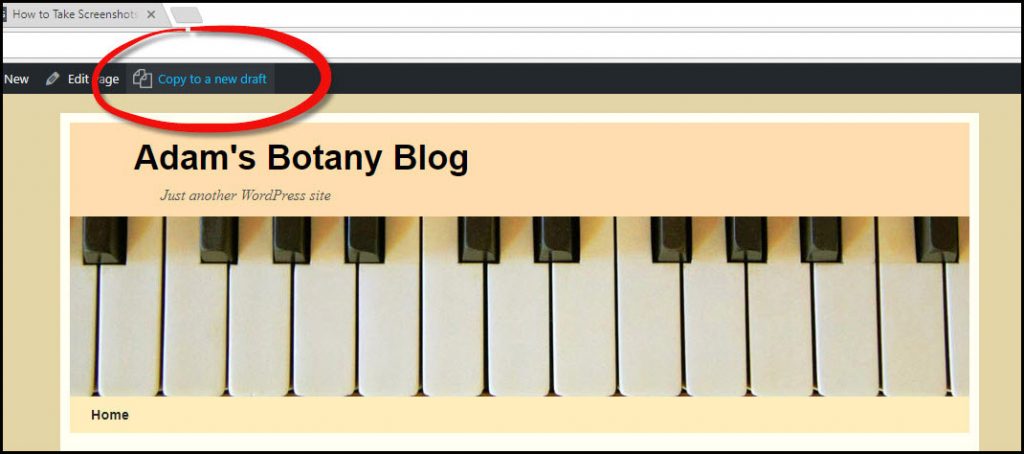
Clone your home page.
Change the name of the page and it will automatically change the URL (“permalink”) to whatever you named it, in this case “TREES.” Don’t forget to “Publish.”
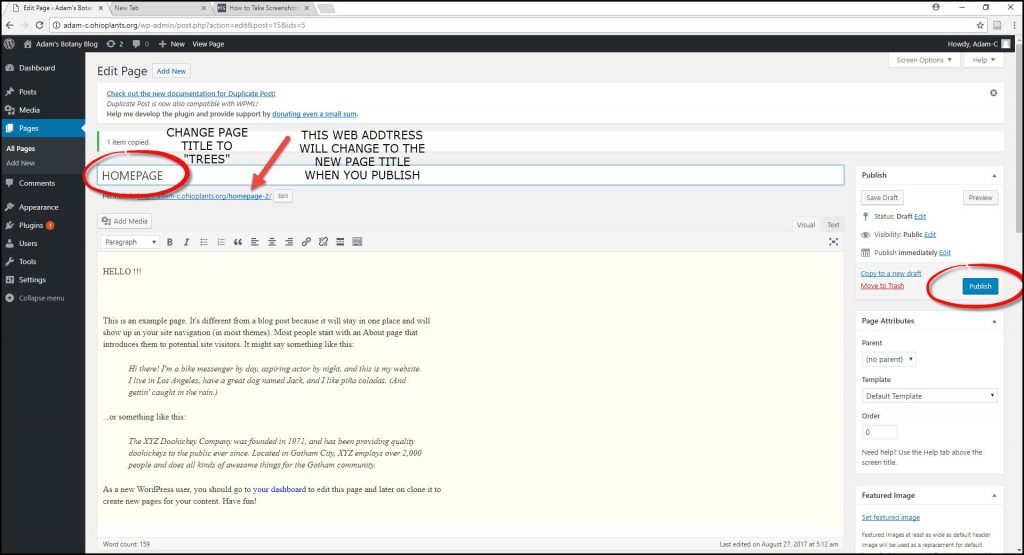
Change the name of your new page and publish it.
Delete what’s there and add new stuff being sure to use the text selection options (Header 2 for headers and Paragraph for everything else works well.) Note the options for boldface, italics, and the ability to add links.
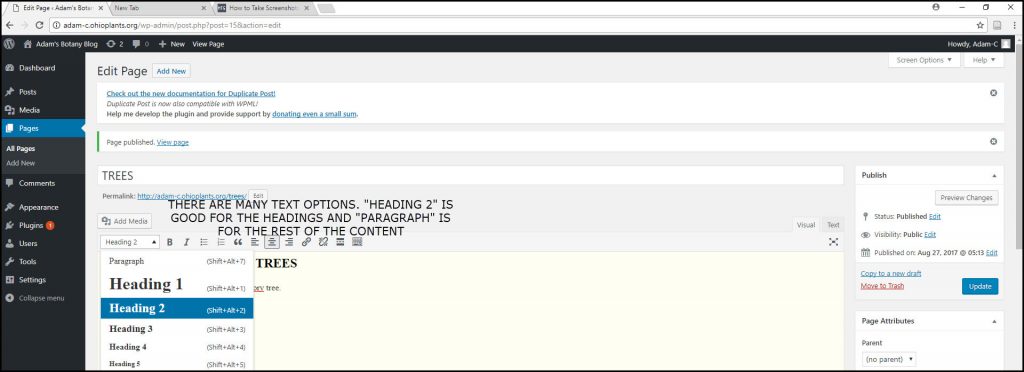
The editor is quite WYSIWYG!
Adding media (photos) is pretty easy; just click the “Add Media” button and find the photo you want to add.

Add Media.
You can upload photos of any size (pixel dimensions) and WordPress automatically creates a set of lower-resolution versions. Note the options displayed on the right-hand side of the media page. In most instances you will want to use “Large” size (640 px wide), centered. You can add a caption when you upload, or afterwards while you are editing your page.
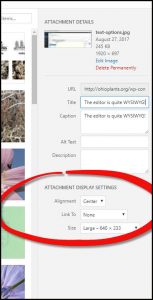
Size and Alignment Options for Photos.
WEEK 1…LAUNCH WEB SITES
Due Sunday August 27 (credit: 10 pts.)
Let’s begin this adventure by launching our web sites. Your web site is a subdomain of this very web site (www.ohioplants.org). The Universal; Resource Locator (URL) for your site is your first name dash first letter of your last name dot ohioplants.org. For convenience, see below, where there are links to your sites. To EDIT your site, simply enter into the browser bar your site name with “/wp-admin” added to it. To log in, enter your username which is same as the unique part of the URL (i.e., firstname-initial, also shown as captions to the links below). Your password is your student number. Welcome!
Personalize your HOME page:
Add a header image, Change the “tagline,” and introduce yourself!
Header image. Navigate Dashboard -> Appearance -> Header. Take or obtain a photo you like, crop/resize it to the recommended pixel dimensions, and put it in place of the silly piano keys. (Details below.)
Tagline. Presently, your site says “Just another WordPress Site.” That’s dumb. Go to (Dashboard) Settings–>General and change the tagline. (Don’t forget to “save” your changes.)
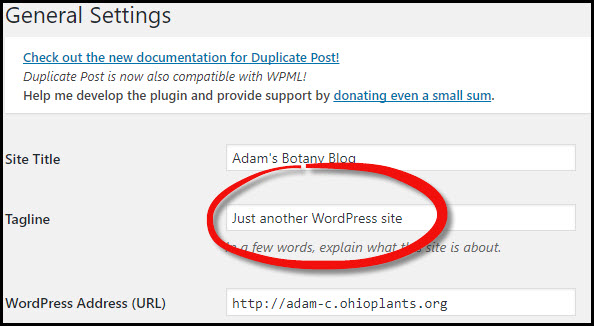
Change Your Tagline.
Introduce yourself on your homepage. The editor has two options –“visual” and “text.” “Visual” is quite WYSIWYG and works like a word processor, and is the mode you’ll probably always use unless you really like hypertext markup language. Delete all the text that is currently on your home page. Please do not delete this page and make a new one, but rather edit (i.e., add content to) this page.
Add a little (or a lot, if you are so inclined) to this page. Suggestions: your academic and personal interests and career goals, a definition of “Botany,” what you hope to learn from this class, etc. Have fun with this!
Note: For all the succeeding web assignments, you will make separate pages (PAGES, not POSTS!) by going to “all pages” on the dashboard (two little pages icon) and creating a “clone” of your home page. Because the home page is formatted in the preferred manner (one column, no sidebars, no comments), please do not create new pages from scratch. Instead, you will clone your homepage, rename it, and replace what’s there with your new content.
Add a new image, following the prompts. The image adding procedure allows cropping, so the header picture doesn’t have to already be 940 x 188 pixels, but you might want to start with an image with those dimensions.


